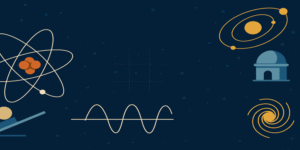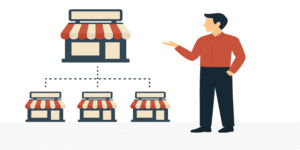In the contemporary digital age, digital literacy has become as essential as traditional literacy. Understanding and effectively utilising digital tools and platforms is critical for personal, professional, and social success. This article explores the concept of digital literacy, its components, its significance, and strategies to enhance it.
What is Digital Literacy?
Definition:
Digital literacy refers to the ability to effectively find, evaluate, utilise, share, and create content using digital technologies. It encompasses a range of skills and knowledge required to navigate the digital landscape (Eshet-Alkalai, 2004).
Components of Digital Literacy:
1.0 Technical Skills: Basic proficiency in using digital devices such as computers, smartphones, and tablets, and understanding software and applications.
2.0 Information Literacy: Ability to locate, evaluate, and use information appropriately from various digital sources (Mackey & Jacobson, 2011).
3.0 Media Literacy: Understanding and critically analysing media content, including recognising bias, credibility, and intent (Livingstone, 2004).
4.0 Communication Literacy: Effective use of digital tools for communication, including email, social media, and collaboration platforms.
5.0 Ethical and Safety Awareness: Understanding the ethical implications of digital actions, including data privacy, cybersecurity, and digital etiquette (Ribble, 2015).
Importance of Digital Literacy
In Education:
Digital literacy is crucial in modern education, where online learning and digital resources are increasingly prevalent. Students must be adept at navigating digital platforms, conducting online research, and using educational software (Ng, 2012).
In the Workplace:
The modern workplace demands digital competence. From basic office software to complex industry-specific tools, employees must possess a range of digital skills to be productive and competitive (Van Laar et al., 2017).
In Daily Life:
Digital literacy impacts everyday activities, including online banking, shopping, and social interactions. It enables individuals to participate fully in a digital society, making informed decisions and accessing essential services (Hargittai, 2002).
Enhancing Digital Literacy
- Education and Training:
- Formal Education: Integrating digital literacy into school curricula ensures that students develop essential skills from a young age (Buckingham, 2007).
- Professional Development: Continuous training for employees helps them keep pace with technological advancements and enhances their productivity (Van Deursen & Van Dijk, 2014).
- Access to Technology:
- Infrastructure: Providing access to digital devices and reliable internet connectivity is fundamental for fostering digital literacy (Warschauer, 2003).
- Libraries and Community Centres: These can serve as hubs for digital learning, offering resources and training to the public (Katz, 2002).
- Self-Directed Learning:
- Online Courses: Platforms like Coursera, Udemy, and Khan Academy offer numerous courses on various aspects of digital literacy.
- Tutorials and Webinars: Online tutorials and webinars can provide specific skills training and updates on the latest digital tools.
- Promoting a Digital Culture:
- Encouraging Exploration: Cultivating a culture that encourages curiosity and exploration of digital tools can enhance digital literacy.
- Fostering Critical Thinking: Teaching individuals to critically evaluate digital content and sources promotes a deeper understanding and responsible usage (Jenkins, 2006).
Challenges in Digital Literacy
Digital Divide:
The digital divide refers to the gap between individuals who have access to modern information and communication technology and those who do not. This divide can be due to economic, geographic, or demographic factors and poses a significant challenge to achieving widespread digital literacy (DiMaggio et al., 2004).
Cybersecurity Threats:
With increased digital engagement comes the risk of cyber threats. Educating individuals about safe online practices, recognising phishing attempts, and protecting personal information is crucial for maintaining digital security (Williams, 2017).
Rapid Technological Change:
The fast-paced evolution of technology requires continuous learning and adaptation. Keeping up with these changes can be daunting but is necessary for maintaining digital literacy (Ritzhaupt et al., 2013).
Digital literacy is a cornerstone of contemporary life, influencing education, work, and daily interactions. By understanding its components, recognising its importance, and adopting strategies to enhance it, individuals and communities can better navigate the digital world. Addressing challenges such as the digital divide and cybersecurity threats is essential to fostering a digitally literate society capable of leveraging technology for positive outcomes. As we move further into the digital age, prioritising digital literacy will be key to unlocking new opportunities and ensuring inclusive progress.
References:
Buckingham, D. (2007). Digital media literacies: Rethinking media education in the age of the Internet.
DiMaggio, P., Hargittai, E., Celeste, C., & Shafer, S. (2004). Digital inequality: From unequal access to differentiated use.
Eshet-Alkalai, Y. (2004). Digital literacy: A conceptual framework for survival skills in the digital era. Journal of Educational Multimedia and Hypermedia.
Hargittai, E. (2002). Second-level digital divide: Differences in people’s online skills. First Monday.
Jenkins, H. (2006). Confronting the challenges of participatory culture: Media education for the 21st century.
Katz, J. (2002). Social consequences of Internet use: Access, involvement, and interaction.
Livingstone, S. (2004). Media literacy and the challenge of new information and communication technologies.
Mackey, T. P., & Jacobson, T. E. (2011). Reframing information literacy as a metaliteracy. College & Research Libraries.
Ng, W. (2012). Can we teach digital natives digital literacy?. Computers & Education.
Ribble, M. (2015). Digital citizenship in schools: Nine elements all students should know.
Ritzhaupt, A. D., Liu, F., Dawson, K., & Barron, A. E. (2013). Differences in student information and communication technology literacy based on socio-economic status, ethnicity, and gender: Evidence of a digital divide in Florida schools. Journal of Research on Technology in Education.
Van Deursen, A. J., & Van Dijk, J. A. (2014). The digital divide shifts to differences in usage.
Van Laar, E., Van Deursen, A. J., Van Dijk, J. A., & De Haan, J. (2017). The relation between 21st-century skills and digital skills: A systematic literature review. Computers in Human Behavior.
Warschauer, M. (2003). Technology and social inclusion: Rethinking the digital divide.
Williams, P. (2017). Assessing cyber risk.









